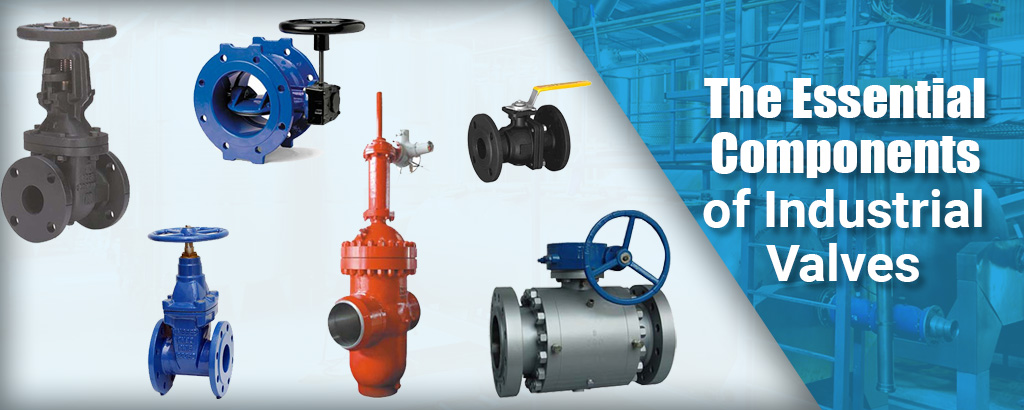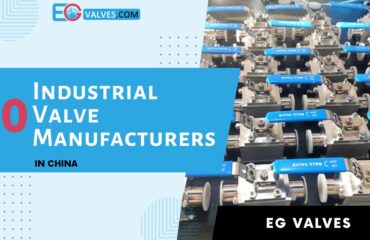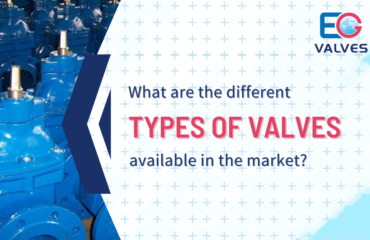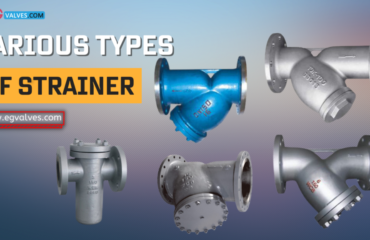Industrial valve systems are known for their simple use in settings that require the management of the flow of materials. Such materials could be anything from solids to liquids to gases.
In water supply systems, the industrial valves have a significant part in passing any substance or fluid at a required pace. When it comes to valve application, several industries, including both residential and commercial benefit from specific valve functionality.
There are different types of valves available, with some being manually operated, or others may be automatic or self-controlled devices. There are some types that mechanically open or close when the control system detects the pressure or temperature difference.
The valve installation is done on water pipes or nearby equipment to perform the basic functions including fluid regulation, segregation, or for any specific purpose.
While installing, the professionals must be familiar with the process and type of valve required for the purpose. Having valve operational knowledge and maintenance needs is vital because the success of any project relies on it. In the water supply systems, the industrial valves have a significant part in passing any substance or fluid at a required pace. When it comes to valve application, several industries, including both residential and commercial benefit from specific industrial valve functionality.
What Constitutes The Valve?
The fully-functional valve comprises different parts that have a big role in passing liquid, gases, and fluids. The common valve types available in the market include butterfly valve, globe, check, diaphragm, pinch, pressure relief, gate valve, and several other types. Among these many types of valves, each performs a similar function with different features and functional capabilities.
Irrespective of the type you choose for any specific industrial application, there are the common basic parts that constitute a valve. These parts are the Valve body, wedge, seat ring, Bonnet, Stem, hand wheel, actuator, and internal packing. All these components have their own role, if any of these parts fail to work, the entire unit will not perform well.
Valve Body
The body of the valve is the center element of the valve that keeps all other parts together. This part is also called the shell that acts as the framework of the valve.
The material used to construct the valve body is brass, bronze, and stainless steel with metal or plastic cladding attached to the upper part of the part. When it comes to the shape of the body, it is manufactured in several forms with each component performing a specific function in the desired material form.
Further, there are different kinds of valve bodies exist that can be used to meet different requirements:
- The first and the most common type is the single –port which can be constructed easily. This body type is available in several forms such as angle, bar stock, forged, globe, and split constructions. Usually, this valve body is designed for applications with rigorous shutoff requirements. By using metal seating surfaces, the body can handle the service requirements better.
- Another popular valve body type is the balanced plug cage style. It is usually single port because it has a seat ring; however, it offers the advantages of a double ported one. This style provides valve plug guidance, seat ring retention, and flow characterization. Likewise, a sliding piston ring type seal between the top of the valve plug and the cage cylinder in reality eliminates high pressure fluid leaks upstream of the low voltage downstream unit.
- Another type is the cage-guided valve body. This has been designed in such a way to use at high-pressure reducing stations. The design includes oversize stop connections with a streamlined drift course and the ease of trim maintenance inherent with cage-fashion constructions.
- Further, port-guided single-port valves are quite popular as well. This type has screwed-in seat rings which are hard to remove after use. In addition to these discussed, there are still some other kinds of valve bodies that can easily satisfy different requirements.
Valve Bonnet
This is again the crucial boundary of the valve that comes in several designs and models. The material used to cast the bonnet is the same as that of the valve body. The bonnet and body connection is made via thread, bolt, or joint which is made during the manufacturing process. Some kinds of valves exist without the bonnet because the body sufficiently can handle the internal components together.
Although valve bonnets are an essential part of the valve, it sometimes causes a hindrance to functionality. This is because the manufacturing of the valves complicates the manufacturing, increases cost, and may become a source for potential leakage.
Valve trim
The valve trim is the crucial internal part of the valve which can be easily removed and replaced when needed. The valve trim consists of the valve seat, disc, guides, spacers, bushings, bushings and internal springs. These parts do not come into contact with the flu fluid; however, parts such as the body, bonnet or packing are in contact with the flow and are not called valve trims.
The valve trim has a role in facilitating the basic motions and controlling the flow regulation. How well the component is performing can be checked by the seat interface and its position to the seat. The valve trim is designed in two ways: rotational and linear. In the former design type, the disk slides near the seat to bring a change in flow opening while the disk slides perpendicularly away from the seat in the linear motion trim designs.
Now taking into consideration the flow-medium characteristics, pressure or temperature difference, speed, and viscosity, the material of the valve trim can be selected. It is not a necessary condition to use the trim material as same as that of the valve body or bonnet.
Valve disc
It is the essential part of the valve that restricts fluid movement depending on the position.
This component is also known as a plug or ball. When the valve closes, the disk acts as a pressure-related part that is designed to provide good wear features.
The disc blocks the posts by preventing the fluid from passing through the other port. Its operational efficiency is determined by the tightness level of turning the wheel. Some valve types pass fluid at high pressures without causing any damage at the ports.
Valve seat
Different kinds of valves have different numbers of seats that form the sealing surface with the disc to control the flow. This means the sealing concept of the valve seat varies as per the different valve structures. In almost all kinds, valve seats are either made up of soft sealing or hard sealing. EPDM and NBR are the most common valve seat materials. They are also called soft sealing valve seats.
Soft Sealing Valve Seat
The soft sealing valve type is further categorized as elastic type, plunger, and special structure. The commonly used type is the elastic one that works under the effect of pre-tightening force or fluid pressure. The sealing performance depends on the capacity between the rotational motion of the wall and the plainness on the surface.
With the elastic seat style, it is possible to cover the effect of the ball sealing property that might be caused by the variations in outside conditions like pressure, temperature, and abrasion.
Hard-Sealing Valve Seat
This type further comes in several styles including rotating, bulk surfacing, multi-level, and hollow pipe style. These are all hard surfaces with an elastic tailstock that help reduce the abrasion of the sealing face.
What will ensure effective sealing is the choice of material for the valve seat. The two most commonly used seating materials are high polymer and metal. Their further classification leads to PTFE-F4, PCTFE-F3, PEEP-F46, Polyvinyl Chloride, Polyethylene, and Polypropylene. Among these materials, consider the stability, aging resistance, and friction coefficient to select the right sealing material.
Valve Stem
Another essential component is the valve stem which performs the function of providing the necessary movement for the disc to open or close the valve. Basically, this component is responsible for the correct positioning of the disc and is designed to handle valve operations. On the one hand, the valve stem is connected to the handwheel, actuator or lever, on the other; is connected to the valve disc. Rotating the valve stem adjusts the movement of the top and bottom wedge, leading to efficient flow control.
In the case of gate or globe valves, the rectilinear movement of the disc opens or closes the valve while the butterfly valves the rotation movement.
Types of a valve stem:
– Rising Stem-Both inside and outside screw
– Non-Rising Stem- inside screw
– Sliding stem
– Rotary stem
Being an important part of the valve system, the stem needs to be maintained well. For this purpose, there are valve stem covers available in the market that help enhance valves performance by protecting them from harmful elements. The manufacturers know the significance of valve stem and thus have come up with a durable stem cover.
Valve Actuator
An actuator is a useful part that is responsible for the linear, oscillatory, and rotary movement of the power source. This power source can be electricity or hydraulics. In simple words, the actuators transform or convert energy into motion. The motion can be linked with anything from blocking, clamping to ejecting. The actuators have their applications in different industries including chemical plants, construction ventures, deep water marine mining, and oil refineries. Made up of certain materials, like aluminum, plastic, stainless steel, actuators have their role in complex pipe and product delivery conduits to the regular flow of liquids.
Among the wide variety of actuators available in the market, the ones that are commonly used are powered by air. Such is also named air or pneumatic cylinder. These air cylinders are air-tight and use compressed air to make a movement. Additionally, these are used in assembly processes and manufacturing as well. Besides these, the other commonly used valve actuators are gear, electric motor, and solenoid actuators. Most actuators available have more than one kind of power source. Let’s understand this for solenoid valves that can be powered by both air and electricity. In both cases, the purpose is to actuate the valve. Also, the solenoid can be powered by a combination of electricity and hydraulics as well.
All kinds of valves comprise handles, wheels, and controls that are meant to turn the stem to lower the disc for hindrance. The advancement in technology has brought contemporary valve types that rely on the automatic wheels operated by the actuator. This helps control the valve from a specific distance, specifically to be used in complex water supply systems.
How To Choose The Perfect Valve For Your Requirement?
Many types of valves exist being constructed with different features and specifications. To meet your industrial valve requirements, it is essential to choose an adequate valve. For this, certain factors help you make the right choice.
- To begin with the valve selection process, it is necessary to get clear regulations about each valve. It is good to get in-depth knowledge about the different valve types.
- Make sure to get the valve that performs the desired function. Do not expect the valve to play the supreme role within one pipeline. Understand the fact that each valve type works as per the specified performance levels.
- Another thing is to gain knowledge of the rating value of the pressure and temperature. Without this idea, it will be no use to invest in the valve. Do carefully consider the gasket and sealing material that helps figure out the withstanding pressure and temperature.
- Analyze the connecting modes and the affected device which may have an impact on pipeline integrity, future maintenance corrosion resistance, and safety.
- Apply the adequate operating mode that differs as per the valve type, size, pressure, temperature, and environmental aspects.
At last, figure out the diameter of the valve needs along with considering the manufacturing materials. Also include the connecting details, the sealing material, and the information about the matching accessories to choose the ideal valve type. Remember, a wise decision about the valve types can only be made after comprehensive consideration and wide knowledge.
If you need a quality industrial valve for water, oil, and gas projects, welcome to contact EG Valves Manufacturing Co., Ltd. We are the industrial valve leaders and are known for fine product quality control and continuous innovation. Visit us at EG Valves to know everything about our services.





